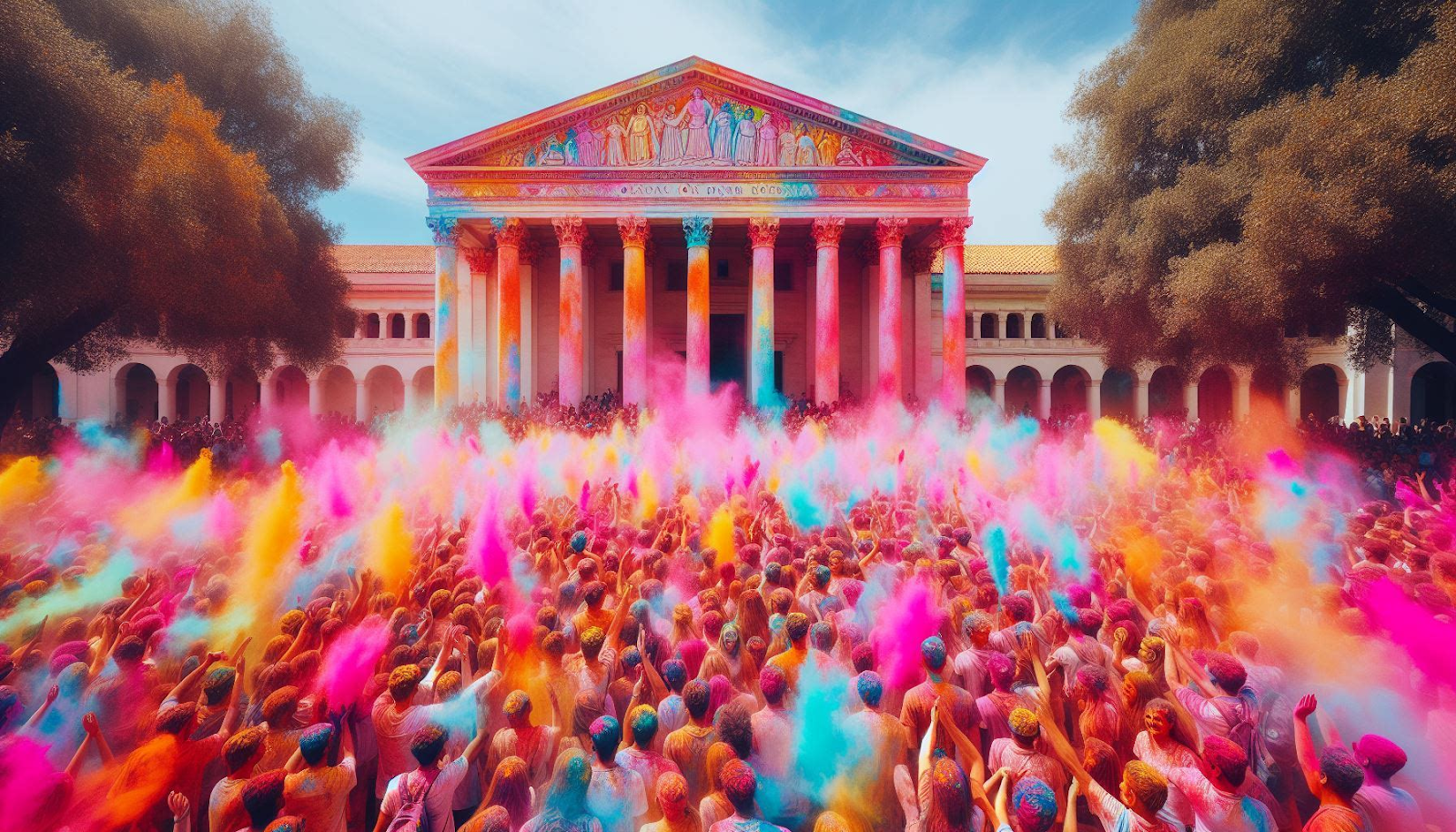Culture
Vibrant Hues and Ancient Traditions: The Colorful Return of Holi Festivities on American Campuses

As the cold grip of winter fades and the first hints of spring emerge, a vibrant and joyous celebration takes over college campuses across the United States. The ancient Hindu festival of Holi, a dazzling display of colors, music, and rituals steeped in spiritual symbolism, has found a thriving home among the diverse student communities that make up American universities.
At Arizona State University (ASU), the Indian Students’ Association (ISA) hosted a large-scale Holi celebration on the SDFC fields, embracing the occasion with traditional fervor and modern flair. The event served as a vivid reminder of the festival’s enduring significance and its growing popularity among students eager to experience different cultures.
The Symbolism of Holi: Welcoming Spring and the Triumph of Good over Evil
Holi, also known as the “Festival of Colors,” is a Hindu celebration that marks the arrival of spring and the blossoming of new life. Its roots can be traced back to ancient Hindu mythology, where it symbolizes the triumph of good over evil, light over darkness, and the regenerative power of love and compassion.
According to legend, the festival commemorates the victory of the divine prince Prahlada over the demoness Holika, who attempted to burn him alive for his devotion to Lord Vishnu. As the tale goes, Prahlada’s unwavering faith protected him from the flames, while Holika was consumed by the very fire she had ignited. This triumph of righteousness over wickedness is celebrated through the vibrant colors, joyous revelry, and spiritual rituals that characterize Holi.
Embracing Diversity and Cultural Exchange on Campus
For the students at ASU, the Holi celebration organized by the ISA was more than just a festive occasion – it was an opportunity to embrace diversity, foster cultural exchange, and create a sense of community. As the campus transformed into a kaleidoscope of colors, students from various backgrounds came together to participate in the age-old traditions and learn about the rich heritage behind the festival.
“Holi is a time for us to celebrate the victory of good over evil, but it’s also a chance for us to come together as a community and appreciate the diversity that makes our campus so vibrant,” said Isha Patel, the president of the ISA at ASU. “By sharing our traditions and inviting others to join in the festivities, we can build bridges of understanding and create lasting connections.”
Traditional Indian Food and Lively Entertainment
No Holi celebration would be complete without the mouth-watering flavors of traditional Indian cuisine. The event featured an array of delectable dishes, from savory curries and fragrant biryani to sweet treats like gulab jamun and jalebi. Food vendors offered a tantalizing spread, allowing attendees to immerse themselves in the culinary delights that are an integral part of Indian culture.
To add to the festive atmosphere, the celebration featured live performances by DJs and music artists, filling the air with upbeat rhythms and the infectious energy of Bollywood beats. Students danced and sang along, their faces painted with vibrant hues as they embraced the spirit of joy and revelry that defines Holi.
A Celebration of Color, Unity, and Renewal
At the heart of the Holi festivities lies the symbolic act of throwing and smearing vibrant colored powders, known as gulal, on one another. This ritual, which dates back centuries, represents the shedding of inhibitions, the breaking down of social barriers, and the celebration of unity and togetherness.
As the colorful powders filled the air, creating a kaleidoscopic canvas against the backdrop of the SDFC fields, students embraced the opportunity to let loose, laugh, and revel in the sheer joy of the moment. The vibrant hues that adorned their faces and clothing served as a visual representation of the diverse tapestry of cultures and backgrounds that make up the ASU community.
“Holi is a time for us to come together, forget our differences, and simply celebrate the beauty of life and the renewal that spring brings,” said Rishab Gupta, a student participant. “The colors represent the vibrancy and diversity of our community, and the act of throwing them at each other is a symbol of breaking down barriers and embracing unity.”
Connecting to Ancient Roots and Building Bridges
While the Holi festivities at ASU were a celebration of joy and togetherness, they also served as a powerful reminder of the ancient roots and spiritual significance that underpin the festival. For many Hindu students, the event was an opportunity to connect with their cultural heritage and share the rich traditions passed down through generations.
“Holi is more than just a colorful festival; it’s a celebration of our ancient stories and the values they represent,” said Priya Sharma, a member of the ISA. “By sharing these traditions with our peers, we can build bridges of understanding and appreciation for diverse cultures and belief systems.”
As the sun set on the SDFC fields, the vibrant colors that had painted the campus slowly faded, but the memories and connections forged during the Holi celebration would endure. For the students at ASU, the festival served as a powerful reminder of the beauty that can be found in embracing diversity, celebrating unity, and honoring the rich tapestry of cultures that make up the American experience.
In a world that often emphasizes division and difference, the Holi festivities on college campuses across the United States stand as a beacon of hope – a testament to the power of coming together, embracing traditions, and celebrating the shared human experience that transcends boundaries and unites us all.
